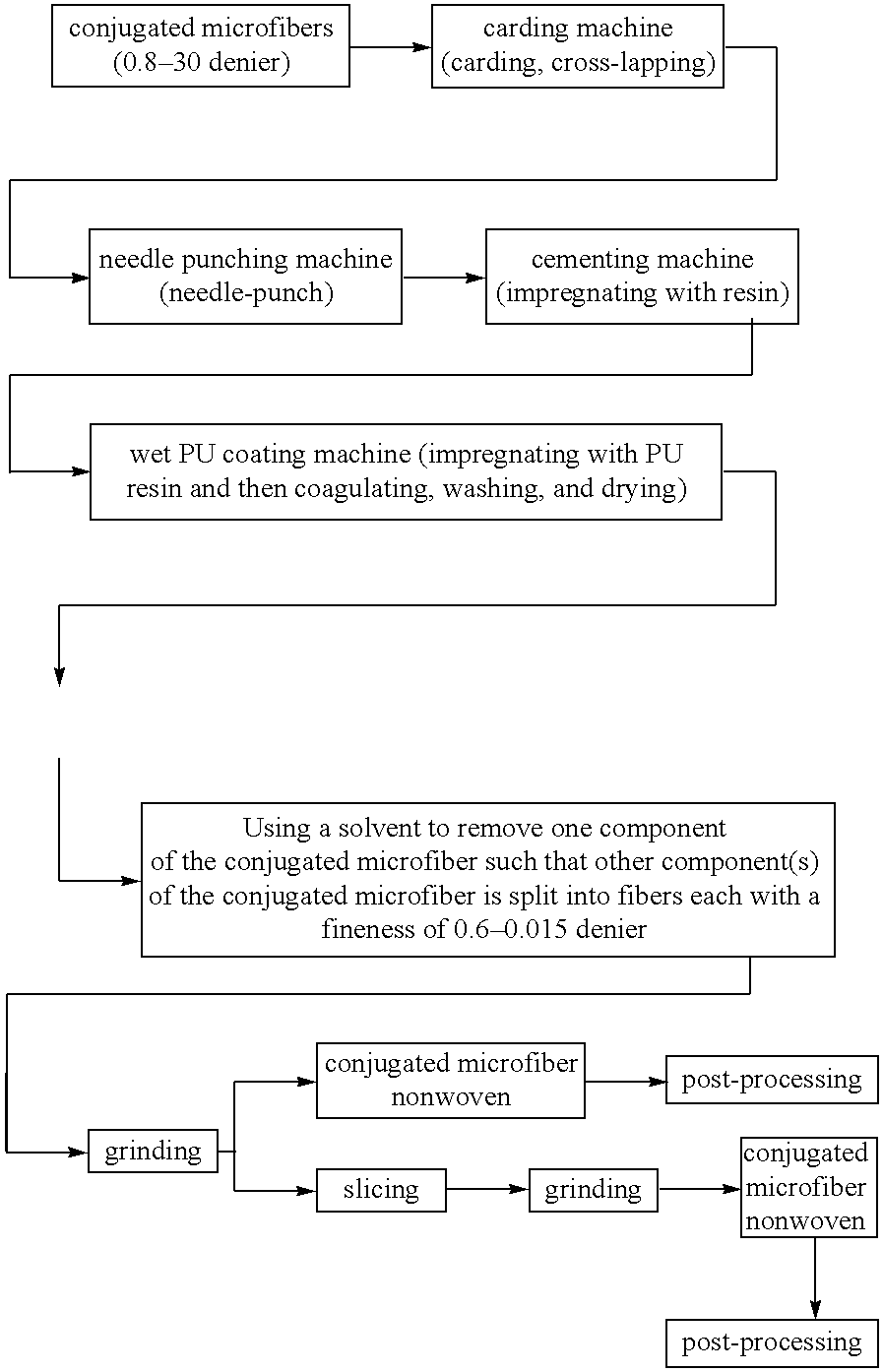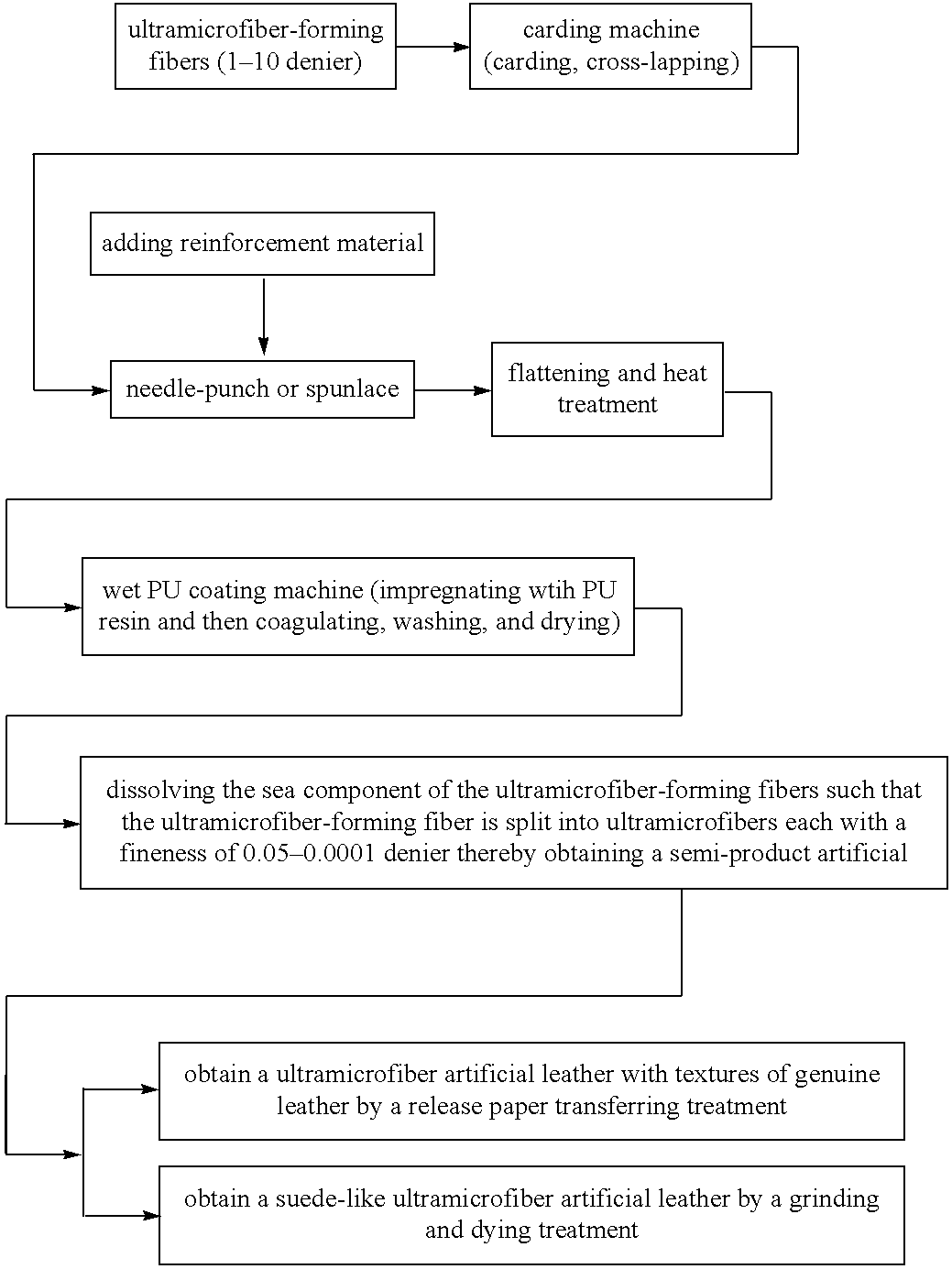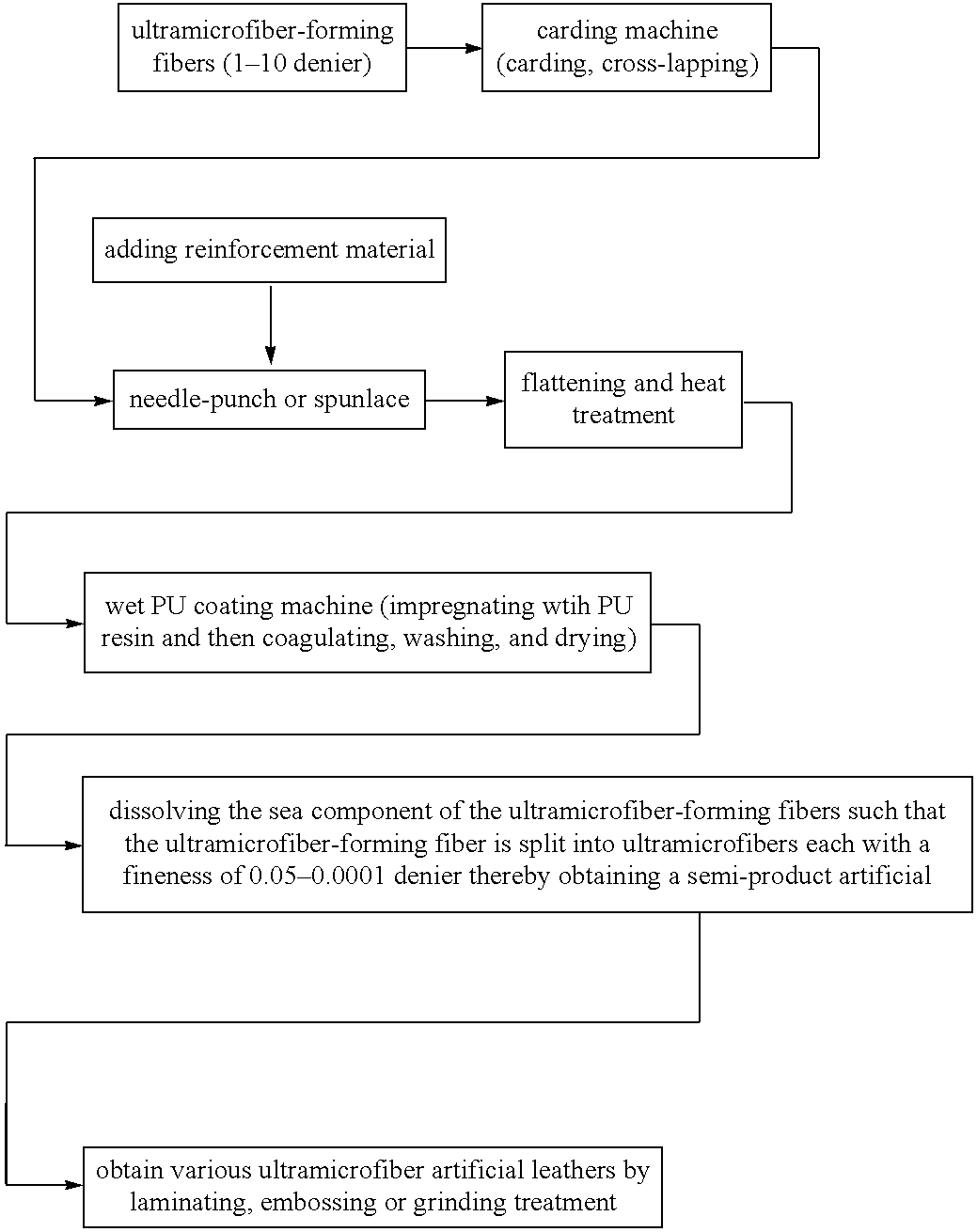Artificial leather composite reinforced with ultramicrofiber nonwoven fabric
a technology of ultramicrofiber nonwoven fabric and artificial leather, which is applied in the field of manufacturing artificial leather reinforced with ultramicrofiber nonwoven fabric, can solve the problems of large difference between the longitudinal elongation and the transverse elongation of conventional microfiber nonwoven, and the strength of leather is quite weak
- Summary
- Abstract
- Description
- Claims
- Application Information
AI Technical Summary
Benefits of technology
Problems solved by technology
Method used
Image
Examples
example 1
[0034]50 parts of Polyamide 6 (used as an island component) and 50 parts of polystyrene (used as a sea component) are conjugate spun into fibers through a spinneret at a temperature of about 280° C. The fibers are wound up at a speed of about 900 m / min so as to produce an undrawn yarn. The undrawn yarn is drawn at a temperature of about 80° C., and then dry and cut to produce islands-in-sea type superfine staple fiber which has a fiber fineness of 4 dpf and a fiber length of 51 mm.
[0035]The islands-in-sea type superfine staple fibers are combed into a uniform web by a carding machine. The webs are then cross-lapped into a web laminate by a cross-lapping machine. The web laminate is then entangled with a reinforcement sheet by needlepunch (the needling density is 700 needle / m2) to produce a complex reinforced ultramicrofiber nonwoven fabric of 340 g / m2. The reinforcement sheet has a thickness of about 0.1 mm, has a weight per unit area of about 40 g / m2 and is formed from twisted yarn...
example 2
[0039]The complex reinforced ultramicrofiber nonwoven fabric of 340 g / m2 obtained in Example 1 is impregnated with a solution prepared by 40 parts of PU composition and 60 parts of dimethylformamide (DMF). After the impregnated PU composition weighs 1.8 times as much as the nonwoven, the substrate is added with red dye and then coagulated in a 25% DMF bath under a temperature of 25° C. to conduct exchange between DMF and water. The substrate is then washed by 100° C. water, and baked under 125° C. so as to form a flexible hard leather substrate which is subjected to a removing process to produce a semi-finished leather. The semi-finished leather is subjected to a grinding process and a dying process to obtain a suede-like artificial leather.
example 3
[0040]The complex reinforced ultramicrofiber nonwoven fabric of 340 g / m2 obtained in Example 1 is impregnated with a solution prepared by 40 parts of PU composition and 60 parts of dimethylformamide (DMF). After the impregnated PU composition weighs 1.8 times as much as the nonwoven, the substrate is added with red dye and then coagulated in a 25% DMF bath under a temperature of 25° C. to conduct exchange between DMF and water. The substrate is then washed by 100° C. water, and baked under 125° C. so as to form a flexible hard leather substrate which is subjected to a removing process to produce a semi-finished leather. The semi-finished leather is subjected to an embossing process to produce a artificial leather with the textures of a genuine leather.
[0041]According to the disclosure of Taiwan Patent Publication No. 152961 (Application No. 78107985) entitled “Genuine-leather-like Complex Micro fiber Nonwoven”, the fineness of the fiber obtained after the removing process is 0.6–0.0...
PUM
| Property | Measurement | Unit |
|---|---|---|
| Length | aaaaa | aaaaa |
| Length | aaaaa | aaaaa |
| Linear density | aaaaa | aaaaa |
Abstract
Description
Claims
Application Information
 Login to View More
Login to View More - R&D
- Intellectual Property
- Life Sciences
- Materials
- Tech Scout
- Unparalleled Data Quality
- Higher Quality Content
- 60% Fewer Hallucinations
Browse by: Latest US Patents, China's latest patents, Technical Efficacy Thesaurus, Application Domain, Technology Topic, Popular Technical Reports.
© 2025 PatSnap. All rights reserved.Legal|Privacy policy|Modern Slavery Act Transparency Statement|Sitemap|About US| Contact US: help@patsnap.com



